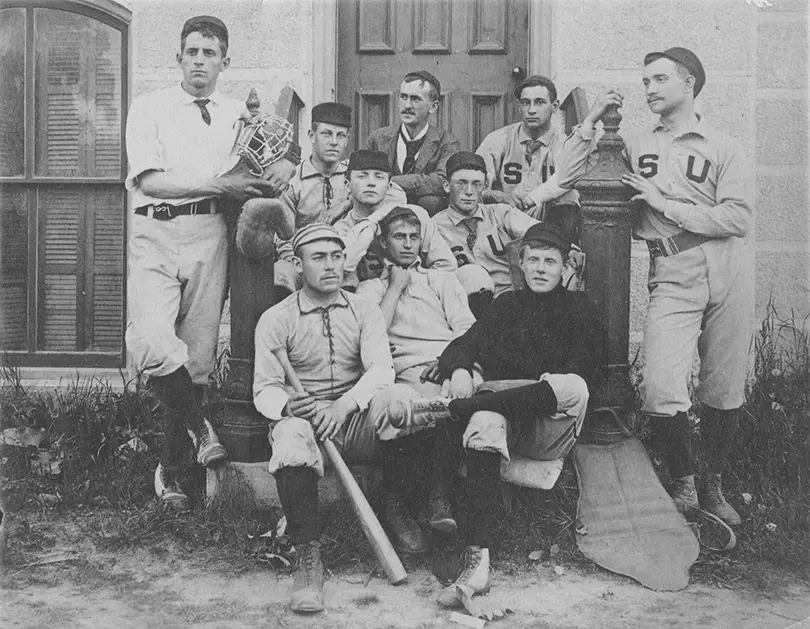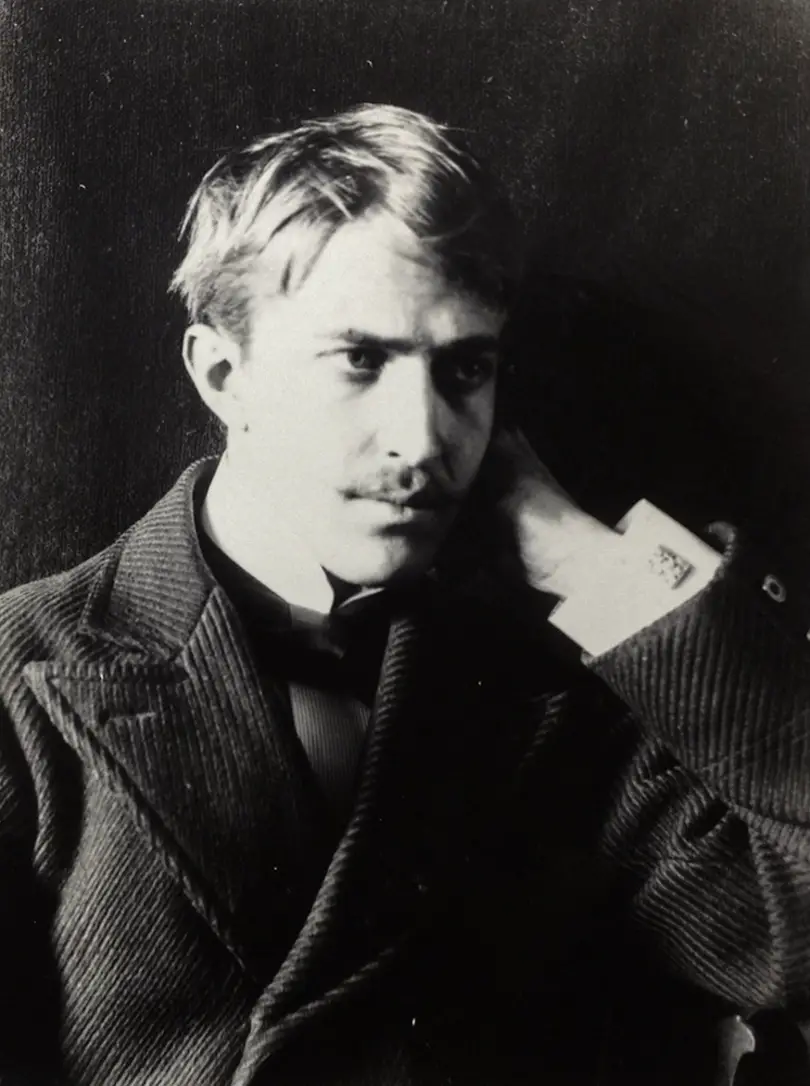Baseball, experiences at SU influence author Stephen Crane
Author Stephen Crane was more interested in baseball, women and fraternity life at Syracuse University than he was in his studies.
But the sights, smells and experiences he had on the Hill influenced the realism in his writing.
After 120 years in print, “The Red Badge of Courage” is still recognized by scholars as one of the finest pieces of American literature. Rick Burton, a sport management professor at the David B. Falk College of Sport and Human Dynamics, said there is evidence to suggest that Crane was heavily influenced by the semester he spent on campus in 1891, four years before the book’s publication. This year marks the 120th anniversary of the publishing of “The Red Badge of Courage.”
“If you read the first two or three paragraphs of ‘The Red Badge of Courage,’ it is very possible that he got that concept of looking down on the village and the bells ringing —which would be the bells of Crouse — from being up in (Delta Upsilon) at the top of Marshall Street,” Burton said.
Burton became interested in studying Crane as part of an academic presentation for the National Baseball Hall of Fame a few years ago. His findings were published in The New York Times, Nine and the Syracuse University Magazine.
On the SU baseball diamond, Crane stood 5-foot-6 and weighed 125 pounds. Originally a catcher, he used to boast that no one could pitch a ball that he could not catch barehanded. At the beginning of season, he was moved from catcher to shortstop because he struggled making the throw from home plate to second base.
Burton described Crane as fiercely competitive, full of life and a passionate baseball player. Burton’s research contains proof that Crane’s baseball career at SU may have been closely linked to the plot of “The Red Badge of Courage.”
In the novel, the protagonist runs from battle, deserting his unit in the face of a Confederate attack. This theme of desertion is critical to “The Red Badge of Courage” and may have come from Crane’s baseball career at Syracuse.
On June 6, 1891, the team traveled to play at Colgate University for the Upstate New York Pennant. By this point in the season, Crane was moved to play shortstop. On that particular day, however, he was forced to play first base when two teammates did not show up for the game. The team lost 13-0.
“He goes to play for this upstate New York championship game, and a guy doesn’t show up and they have to play shorthanded,” Burton said. “And instead of Crane being the coward, which is the perspective you see in ‘The Red Badge of Courage,’ Crane is one of the guys left behind and is forced to play a position he normally didn’t play.”
Crane did not fight in the Civil War and had never seen the battlefield when he wrote “The Red Badge of Courage.” Despite this disconnection, he is renowned for the novel’s realism. Jan Finkel, who co-wrote with Burton a piece about Crane’s time at SU for the literary magazine, Nine, said Crane’s background in sports allowed him to get into the war state of mind.
“It is kind of ironic while his mother and father would not have approved his interest in sports, they contained most of the Christian values that they were espousing — charity, fraternity, sacrifice, rescue, that sort of thing,” said Finkel, a retired English professor at Union College in Barbourville, Kentucky. “If you think about it some more, that is exactly what war involves.
“War brings out the best and worst from people, so do sports for that matter.”
Outside of baseball, Crane was heavily involved in other extracurricular activities. The 1891 Onondagan noted that he served as alumni association secretary and treasurer of Claverack College, a military boarding school he attended from 1888–1990. He was also captain of the Delta Upsilon cricket club, a member of an eating group called the Toothpick Club and a member of the DU winter coasting club.
In a letter to a friend dated Jan. 9, 1891, Crane wrote, “The DU chapter here has got a dandy house valued at $20,000.00, situated high on a hill. I hope you may all come here sometime, although the fellows are somewhat slow … There are certainly some damn pretty girls here, praise be to God.”
Crane did not enjoy academic studies and enrolled in only three classes: Latin, history and English. At the end of the semester, he had only completed his coursework in English and received an A.
He spent a lot of his time downtown at the police and train stations, talking to the bums, drunks and prostitutes that hung out there, Burton said. Crane believed that “humanity was a much more interesting study. When I ought to have been at recitations, I was studying faces on the streets.”
“He would go to downtown Syracuse to check out the scene there, and that’s where he wrote most of his first novel, ‘Maggie: A Girl of the Streets,’ which he was working on here, and in Asbury Park as well,” said Frank D’Alessandro, owner of the Stephen Crane House in Asbury Park, New Jersey.
Crane’s fraternity brothers claimed after his death that an early draft of the novel was crammed in DU’s attic, but the pages have never been found.
Over 100 years later, SU still has ties to the author. The Special Collections Research Center boasts the largest collection of original Stephen Crane materials in the world. The collection includes correspondence, writings and memorabilia from the author and his wife.
The Delta Upsilon house still stands at the top of Marshall Street and Ostrom Avenue. Now an academic building for Falk College, the large white house features a bronze plaque highlighting the author’s residency.
Said Burton: “I think Crane was competitive. He was full of life. He was kind of on fire and ‘fuego,’ to steal a term from ESPN. He was anxious to get after it. As a professor, I see students now, and I wonder if they are as enthusiastic about anything.”
Published on February 10, 2015 at 12:02 am
Contact Jacob: [email protected]






